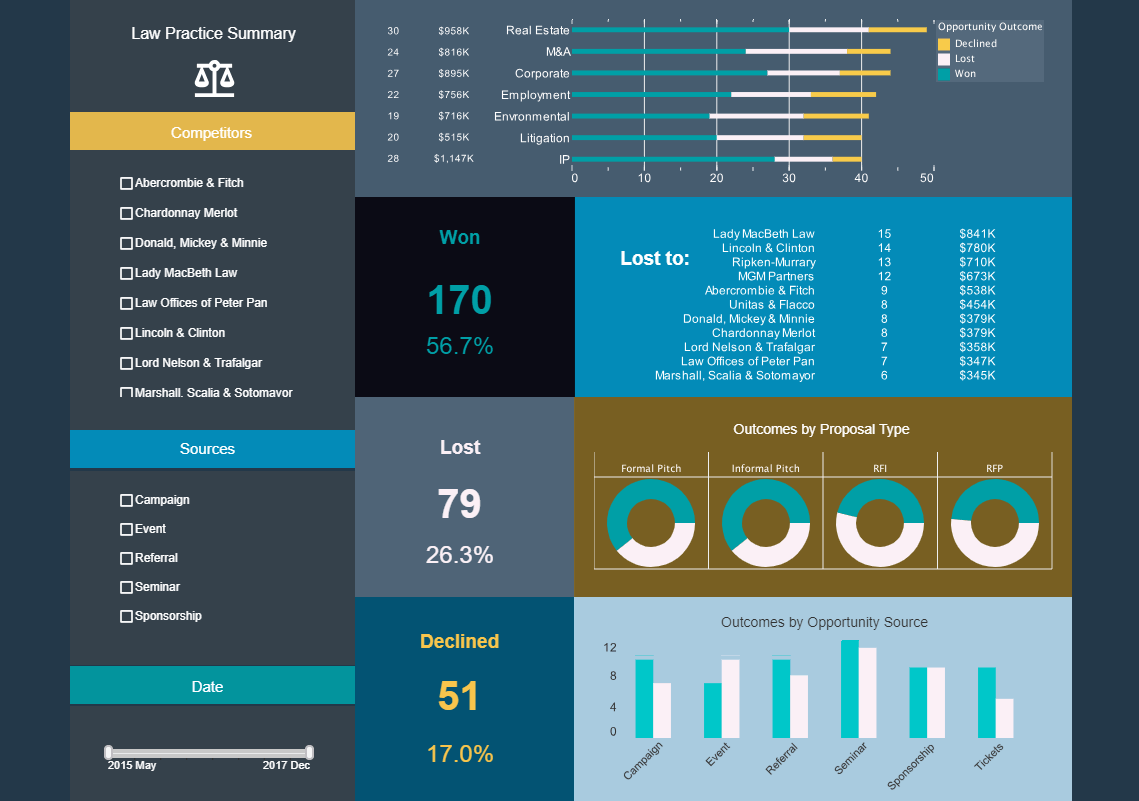How Business Intelligence Changes Law Firm Management Today
Reynolds Porter Chamberlain (RPC), the London-based law company, was struggling. Due to ineffective practices, the firm's partners had to do a lot of basic legal work rather than delegating it to them. As a result, the clients and partners of RPC spent more money than they should have on legal work, and the reputation of the company was undermined, too.
The main reason why RPC's lawyers struggled to do their job efficiently was the lack of access to business analytics. After the company's management reviewed the problem, they made a decision that changed the way the managers worked: provide them with access to a business analytics program with an intuitive dashboard on iPads which were given to the lawyers.
As a result, RPC's clients started to delegate more legal work to the company and their individual bills were lowered. By changing the way employees obtained access to business intelligence, the company was able to make quicker and more effective decisions.
RPC is, of course, just one example of how business intelligence has made a difference for a law firm. The global business intelligence market has been growing like crazy, with the current size of $63.3 billion projected to reach $97.3 billion by 2025.
So how are the investors in business intelligence and analytics tools using them to get a competitive advantage in the legal practice market? In this article, you'll learn about the ways in which these solutions are changing the way people do law firm management today.
| #1 Ranking: Read how InetSoft was rated #1 for user adoption in G2's user survey-based index | Read More |
Simple Definition of Business Intelligence
Before we get all technical, let's talk about what business intelligence really is. It may mean different things to different people; for example, just a few years ago, thinking of business intelligence as some kind of confidential, insider data was not uncommon.
Indeed, business intelligence processes have some things in common with military intelligence (plus this knowledge was restricted to a number of selected persons in a company), but now they've become a pillar of business growth.
So, here's how to define it in a simple way:
Business intelligence is information and data that businesses can use to optimize operational efficiency, improve productivity, and make both short- and long-term strategic decisions.
This information and data are critical, and the examples include:
- Email click-through ratio
- Customer buying habits
- Typical customer support requests
- Online shopping stats
- Website browsing behavior
- The most viewed products.
Hiding this information by restricting access to a few selected individuals now is a sure-fire way to fail because every employee should possess the knowledge to make effective decisions.
 |
View a 2-minute demonstration of InetSoft's easy, agile, and robust BI software. |
But how would both employees and leaders use this data to transform the way their businesses are run?
1. Serve More Customers by Improving Planning
One big misconception that people have about business intelligence is that only big corporations can use and benefit from it. This couldn't be further from the truth.
Eat, a UK-based coffee chain, is a great example here. The company wanted to give their employees the insights into the most popular products, the busiest times, and other important data so they could understand their customers better.
What they did was a simple but effective solution. By giving the serving personnel Windows tablets that had business intelligence and analytics tools, they made it possible for them to see which products were selling the most and which stores in the chain were the busiest.
As a result, the staff had more information about how to prepare in a way that allowed them to provide better services. The management also benefited from the data by using it to improve planning on a store-level.
| Next: Descriptive Analytics Examples |


